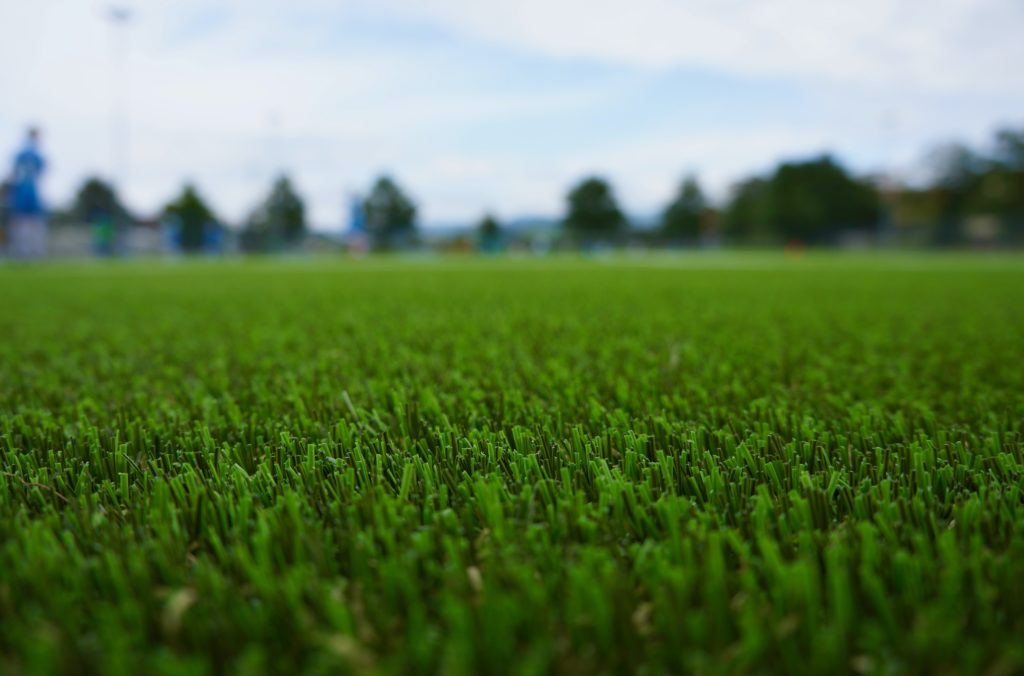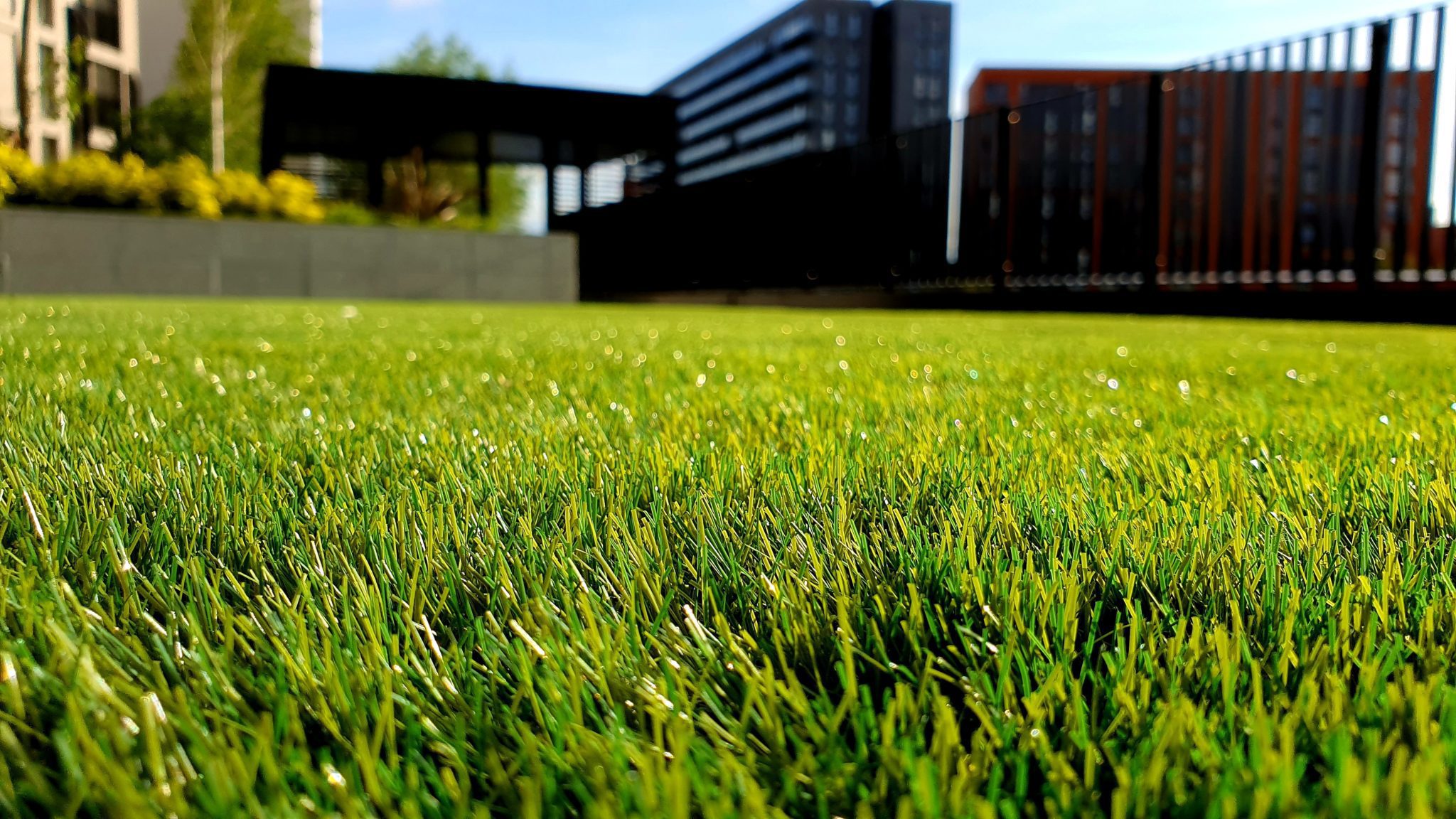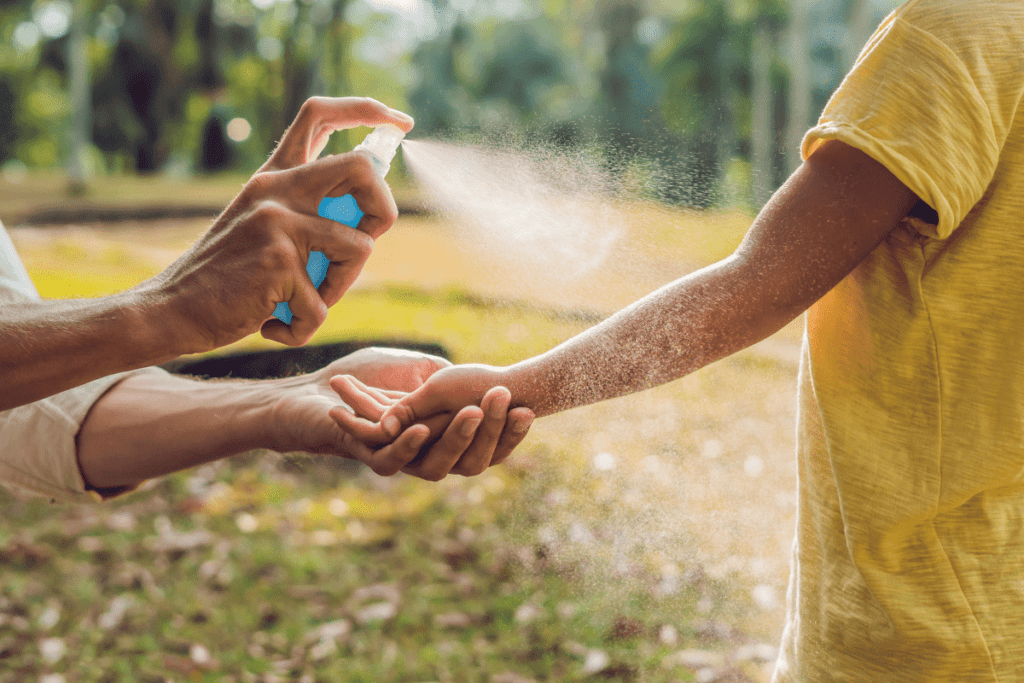This is a guest blog by Rochelle Rubinstein
Have you ever walked past a sports field or playground in the middle of winter and noticed the grass is still green? I’m sure it will come as no surprise that it’s not really grass – it’s artificial turf, and it’s anything but green.
What is artificial turf, and why is it problematic?
Artificial turf consists of grass-like blades made of plastic with an infill that is usually made from ground-up tires.
Artificial turf releases toxic chemicals when spread on a play surface or yard, especially when exposed to sun, rain, and other weather events. Continuous activity on the artificial grass (like running) also breaks down the grass blades into microplastics. These tiny pellets of plastics can be easily inhaled, ingested and dermally absorbed. But these microplastics don’t just stop there – the tiny pellets also migrate widely outside the fields and yards into our homes and stormwater runoff.
While natural grass absorbs carbon dioxide and releases oxygen, artificial turf does the opposite by releasing CO2, methane, and a variety of chemicals. Chemical analysis of artificial turf conducted at Yale University found 96 chemicals, 20 percent of them probable carcinogens. In addition, artificial turf contains highly toxic PFAS or “forever chemicals” linked to lower childhood immunity, endocrine disruption and cancer. Children are especially vulnerable to inhalation, ingestion and dermal absorption, as they are lower to the ground and breathe more quickly.
On top of the chemical makeup of artificial turf, it is also impermeable (unlike natural grass). It requires harsh chemicals for cleaning sweat, mucus, spit, blood, bird droppings, etc., that remain on the surface. And while natural grass has a cooling effect, artificial turf absorbs heat and can become dangerously hot.

Is all artificial turf toxic?
After years of blowback from parents and environmentalists, some companies are now advertising artificial turf made with “natural infill.” But beware of these greenwashing tactics! These so-called “natural/organic” infills are typically made from silica sand coated with acrylic polymers. These pellets can easily break down into hazardous silica dust – a lung hazard recognized by the EPA as a carcinogen. This is also combined with the breaking down of the acrylic polymer coating into plastic dust and micro-debris. Some “natural” infills are made from cork and coconut, which can easily flake and blow away, leaving a dangerously hard playing surface.
On top of that, no matter how “natural” the infill may be, the plastic green blades that act as “grass” remain a serious environmental and health concern.
So what is the solution?
The environmental and health dangers associated with artificial turf lead to one conclusion: replacing natural outdoor surfaces with artificial turf is not acceptable.
Here are some steps for taking action:
- Talk to others, especially parents and educators. No doubt, the more aware we are of the health and environmental dangers associated with artificial turf, the more we start to notice it proliferating in private yards and public spaces.
- Speak up when there is community consultation about replacing natural fields and playgrounds in your local school or park; organize parent and teacher coalitions to reject artificial turf as a replacement for natural areas.
- Write to local and provincial officials, who often are not aware of the dangers of artificial turf and ask them to ban it.
- When dealing with an existing artificial turf surface that has already replaced a natural surface, be mindful that it must be replaced after 8 to 10 years – and is very expensive and cumbersome to dispose of. Speak up and take action when the time comes to replace the artificial turf.
- Support the reform of the Canadian Environmental Protection Act (CEPA) to ensure that proof of harm rests on manufacturers and not the public.

Important tips to keep in mind when playing on artificial turf:
- Avoid use on hot days.
- Avoid sitting, lounging or picnicking on it.
- Monitor young children to prevent accidental ingestion.
- Always wear shoes.
- Wash your hands before eating or drinking after playing on the turf.
- Clean cuts and abrasions immediately.
- Remove and clean shoes and gear outside before getting in a car or entering a building.
- Shower after playing on artificial turf.
- Vacuum any infill that comes into your home.
As Dr. David Brown says, “The evidence of hazardous substances is sufficient to create a burden of proof of safety before more fields are installed.”
Let us remember how important it is to not just say no to artificial turf, but also to appreciate our precious green spaces. So this spring, get outside and enjoy nature!
Recommended resources for more information on artificial turf: Artificial Turf & Children’s Health, 12 Reasons Why Synthetic Fields Pose a Health Risk, Safe Healthy Playing Fields Coalition Information Sheet, National Center for Health Research, TURI Turf Fact Sheet: Toxic Use Reduction Institute

Rochelle Rubinstein is a Toronto-based printmaker, painter, fabric and book artist. Rochelle is also a steward of Bela Farm, where she is engaged in art, agriculture, and activism.









